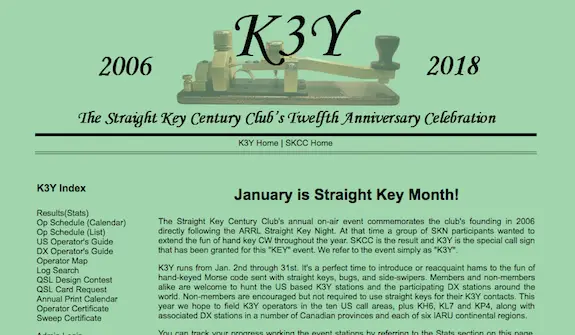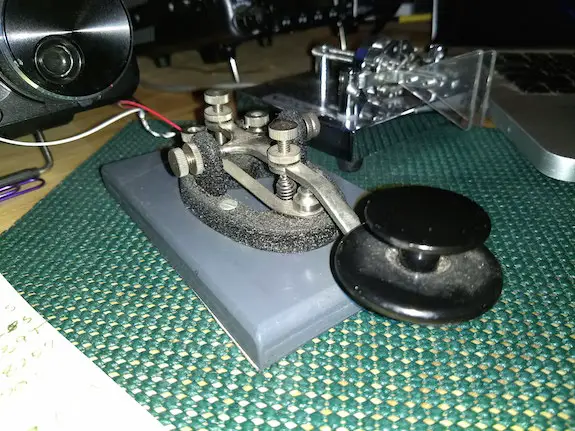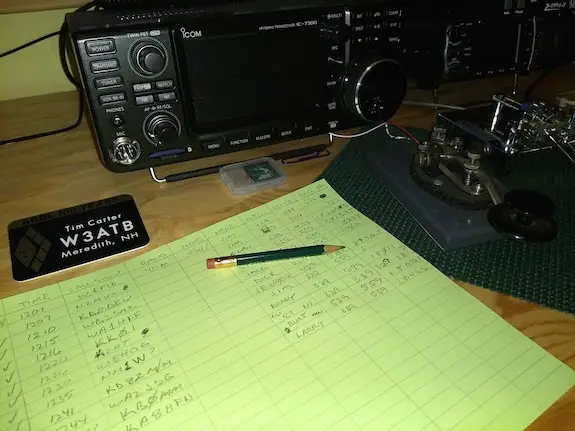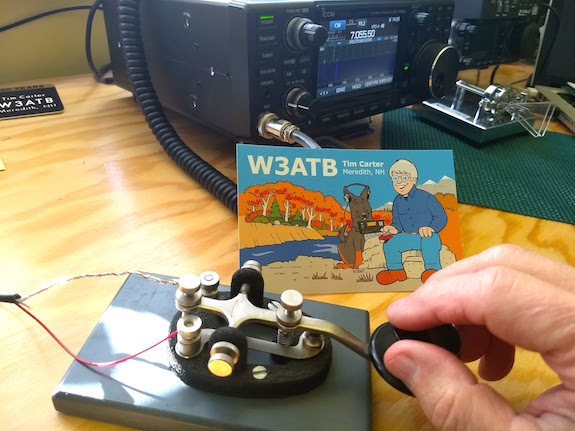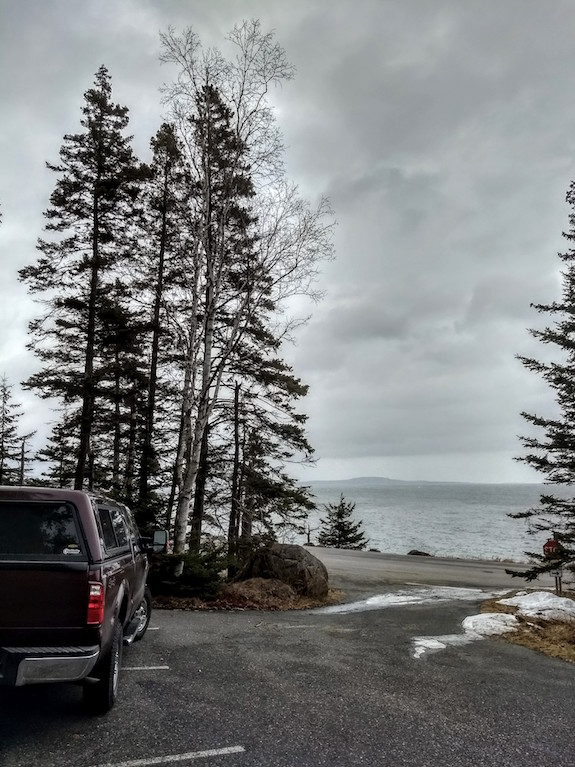
Winter field day 2018 at Acadia National Park started gloomy, but ended quite well. Wind and a balmy temperature of 42 F took away some of the pain. Minutes after taking this photo I had my 29-foot wire antenna hanging from the top of the birch tree with no leaves. Copyright 2018 Tim Carter
Winter Field Day 2018 – All Alone at Acadia National Park
Today was another first for me in this amazing hobby. I was one of a handful of people at the most magnificent USA National Park east of the Mississippi River – Acadia National Park.
There was no doubt in my mind I was the only amateur radio operator there planning to participate in Winter Field Day.
I decided to setup operations with a view to the Atlantic Ocean and found a deserted parking lot just south of the Gorham Mountain trailhead along the stunning one-way ocean drive. I was about one mile south of Sand Beach.
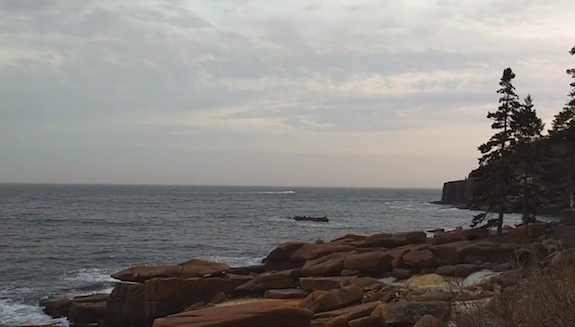
CLICK THIS IMAGE – or CLICK HERE – to watch a video of what I saw and where I was set up. Copyright 2018 Tim Carter
“Well that’s odd. Why won’t the connector attach to the radio?”
I thought that as I tried to rotate the outer ring of the male BNC connector to my Elecraft KX2. Normally the BNC connector slides on, rotates and locks into position.
After two attempts, I took it off and looked at the end.
“How did the center male pin get bent? No worries, I’ll straighten it with my knife.”
I pulled out my Sog Flash II and proceeded to not only straighten the center core of the connector but then snap it off completely. It’s my favorite pocket knife of all time and I’ve yet to tame its power.
“Are you kidding me? (Shaking head, but maintaining my cool.)
Related Links
My First Real Contest Success – Zombie Shuffle
No Spare Parts – Last Time That Will Happen
It all happened so fast I was still in shock. Don’t tell me I’m not going to be able to get on the air! I didn’t have a spare PL-259 female / BNC male adapter even though there’s more than enough room in my Pelican 1200 case for one.
Heavy sigh…..
Something inside me said to text my mentor Jim Cluett, W1PID. God does work in mysterious ways. Little did I know it but he was minutes away from walking out his door back in central New Hampshire to go on a walk with his lovely wife Judy.
I moaned in the text what had happened and how my day was now ruined.
Seconds later my phone rang.
“Listen. You can just use a piece of wire to save the day. Strip the end and shove it into the tiny hole on the side of the radio. Wrap the other end around the center of the large coax cable. Take another piece of wire and attach it to the side screw on the body of the KX2 for a counterpoise. I’ll call you when I get back from my walk.”
Victory!
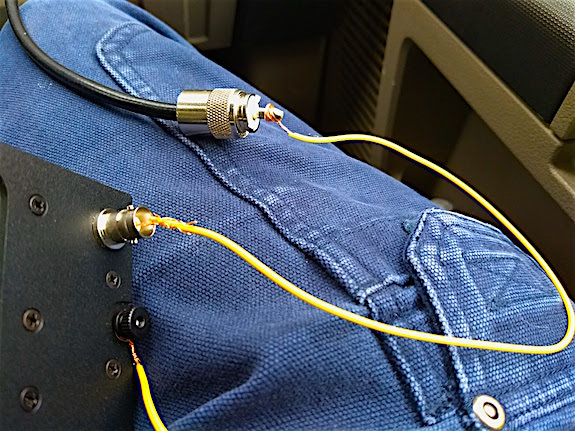
Here’s my hack for the broken BNC connector. Believe it or not, it worked and worked well. The small stub of yellow wire is the counterpoise that extended from the radio out on the ground about 15 feet. Copyright 2018 Tim Carter
It worked! While it took about 15 minutes to get the right combination of folded wire strands to fit snugly into the female receptor on the side of the radio, it was worth it.
I powered up the radio and it tuned perfectly on 40 meters. There were quite a few stations calling CQ WFD. It was time to hunt.
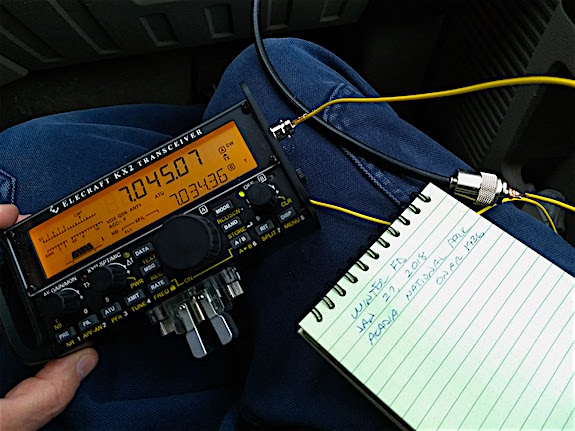
I’m all set to make a few contacts just 250 feet from the Atlantic Ocean. The only thing that could have been better was blue sky and 75 F. Oh, it would be great if my wife Kathy was there too! Copyright 2018 Tim Carter
Within a few minutes I scored my first QSO and just over the border to Canada. What fun!
| Operator | Exchange | Time Zulu |
| VE2CRO | 4H QC | 1940 |
| K9LJN | 1I IL | 1947 |
| VE2CWI | 2O QC | 2001 |
| KN2X | 1O ENY | 2006 |
| N4FR | 4O TN | 2014 |
| N3CU | 1H EPA | 2029 |
After an hour of fun, I looked at my watch and thought I’d better break down. With the deep overcast, it was going to get dark in a hurry.
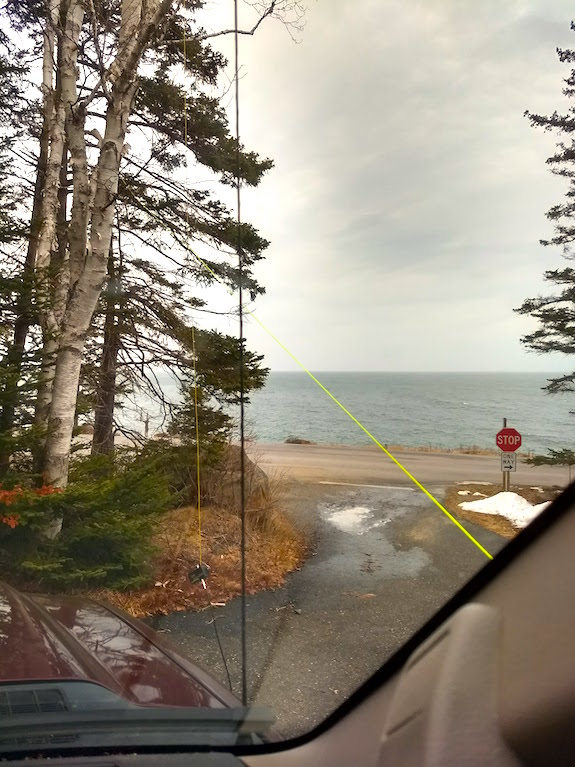
This was my view from my truck. The bright yellow cord is the halyard holding up my thin 26-gauge yellow wire. The wire is attached to a 9:1 unun. Copyright 2018 Tim Carter
Moments later my phone rang and it was Jim.
“How’d you do?”
I told him it was a successful day and that just three years ago I’d never have been able to do a contest like this.
“Hah, three years ago you would have had negative QSOs. Operators would have told you NOT to send them QSL cards because you were such a poor operator.”
We both laughed quite hard. Jim can get away with ribbing me because he labored through the dismal times of me clawing my way up on the CW curve. He’s earned the right to poke fun so the memory of my single-digit word-per-minute (WPM) speed never fades.
But now I’m not such a dreadful operator . Am I great?
No.
Am I respectable?
I think so but absolutely have a long way to go.
Am I having fun and getting better each outing?
Yes you bet I am.
Fun and not getting skunked are my primary goals each time I operate outdoors. If I make it to 20 WPM some day, all the better.
But by gosh bring spare parts next time!

